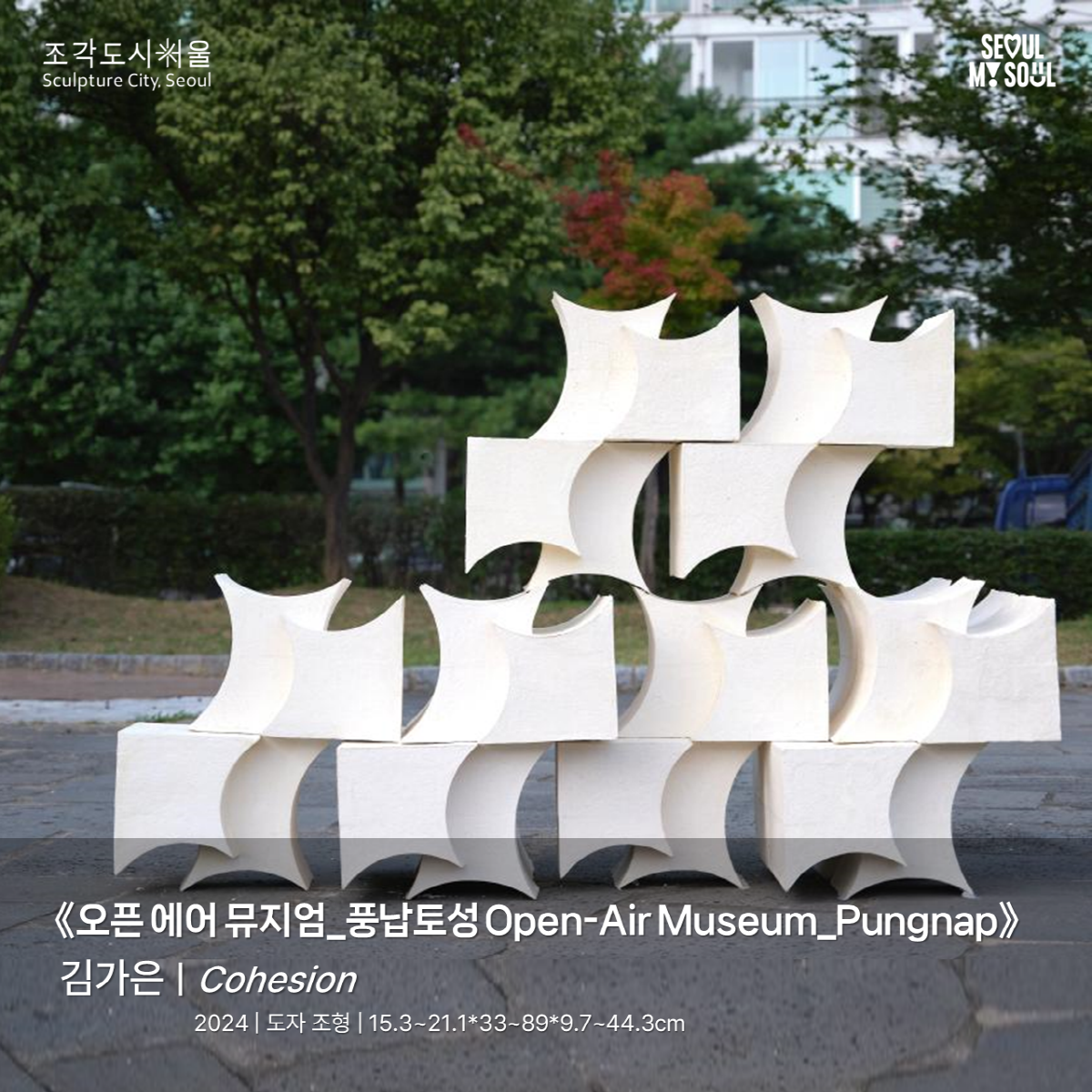

특히 이번 전시에서 작가는 기존의 작업 규모를 갱신하기 위하여 제작 과정의 변화를 꾀했다. 3D 프린팅으로 유닛의 틀을 제작하고, 그 안에 흙을 넣어 굽는 가압 성형 기법을 사용함으로써 크기가 크고 밀도가 균일하면서 동일한 형태의 도자 유닛을 여럿 제작한 것이다.
작가는 이러한 유닛을 연속적으로 결합하여 덩어리를 만들고, 야외 바닥을 효과적으로 점령할 수 있도록 배치했다. 작가는 도자의 형질이 표면을 통해 구체화되는 속성에 대한 관심을 지속하며, 기존에 미술관 내부에서 보호되던 도자가 이번 야외 전시 속에서 햇빛과 바람 등 외적 요건 아래 어떤 질감을 자아내는지 주목한다.
Within the exhibition, the artist sought to rescale her previous works by altering the production process. Kim created a mold using 3D printing, and then, using a pressure molding technique, filled the mold with clay and fired it―producing several large ceramics uniform in density and shape.
The artist combined these units in succession to create a large mass, strategically placing it so that it effectively occupies the floor outdoors. Maintaining an interest in how ceramics are materialized through their surfaces, Kim focuses on how these previously protected ceramics, now displayed outdoors, respond to external circumstances such as sunlight and wind, and the textures they produce as a result.